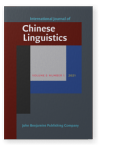Vol. 8:1 (2021) ► pp.73–101
A cartographic approach to sentence production in aphasia
Evidence from Chinese
There is much evidence that individuals with aphasia (IWA) are impaired in tense or aspectual inflections and the production of non-canonical sentences like passives. On the Cartographic Approach (CA), passives are represented at the lower node in the syntactic tree, with tense or aspectual elements at the higher node. This hierarchical structure can be used to account for the selective impairments in aphasic production. The present study reports the empirical findings from Chinese agrammatism using the theory of cartography. It is found that the performance of IWA with different degrees of severity is associated with different nodes (CP, TP, and vP) in the syntactic tree. Notably, the Chinese-speaking IWA are severely impaired in vP-related elements. Finally, the present study highlights the significance of adopting a cartographic approach to aphasia studies.
Article outline
- 1.Introduction
- 1.1Agrammatism
- 1.2The linguistic accounts of agrammatism
- 2.A review of the cartographic approach
- 2.1A general introduction
- 2.2A cartographic analysis of functional categories in Mandarin Chinese
- 2.2.1Complementizer phrase
- 2.2.2Tense phrase
- 2.2.3Light verb phrase
- 3.Sentence production in Chinese aphasia
- 4.A longitudinal study of Chinese agrammatism
- 4.1Participant
- 4.2Materials, tasks, and procedure
- 4.3Data analysis and results
- 5.Conclusion
- Acknowledgments
-
References
